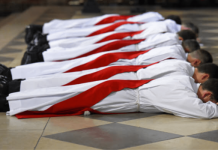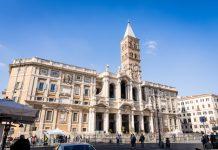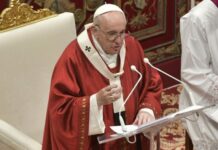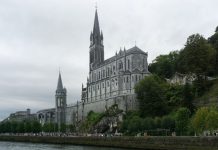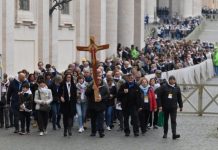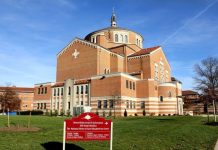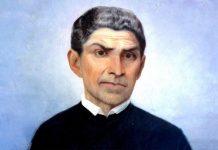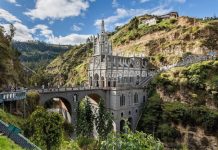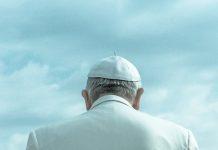After the successful Conquest of Jerusalem, many Crusaders returned to Europe. When they arrived back home to their lands, they were welcomed with veneration: the people knelt before them and caressed those hands which had freed the Sepulchre of Christ.
Newsroom (16/03/2023 18:00, Gaudium Press) During the Crusades in the Holy Land, the struggle went on. Defeated by the warriors of the Cross, the Muslims resorted to banditry: they robbed Catholics on the roads, killing them or selling them as slaves; they even went into the cities at night and committed murders.
Faced with this common danger, the faithful became soldiers. Even the religious who served in hospitals and pilgrim hostels felt the need to wield the sword to defend those they sheltered.
Military Order of Saint John of Jerusalem
The Italian friar, Gérard, ran a hospital in Jerusalem, founded some decades earlier by merchants from Amalfi, an important southern Italian port on the Tyrrhenian Sea.
During the siege of the Holy City by the Crusaders, the valiant Gérard threw pieces of bread to the attackers four times a day from the top of the wall. Gerard was taken by the Mohammedans to the Emir to be punished, but did the bread he was carrying turn to stone?
And then one day, Godfrey de Bouillon went to pray at the Holy Sepulchre and soon after visited Friar Gérard. Shortly afterwards, some Crusaders placed themselves under Gérard’s orders and they all began to wear a black habit with a white cross on it at chest height.
Thus was born the military Order of Saint John of Jerusalem, also called the Hospitallers, which in the 16th century settled on the Island of Malta – near Southern Italy – and became known as the Order of Malta.
Essentially religious character of the First Crusade
Pilgrims flocked to the Holy Land from the nations of the West, including many clerics and religious. They repaired the churches, re-established worship, built new temples and convents. On Mount Tabor – where the Transfiguration of Our Lord had taken place – a Benedictine monastery was built.
This shows that the First Crusade had an essentially religious character, seeking the exaltation of the Church, the defeat of its enemies and the salvation of souls.
The great driving force behind this sacrosanct epic, Pope Blessed Urban II, delivered his soul to God on 29 July 1099, without knowing that Jerusalem had been recaptured a fortnight before, because communications were very slow at that time. But in Heaven, he would have exulted with joy on hearing the news.
Baldwin and Bohemond (the leader of the first Crusade) had arranged a trip to Jerusalem to pay homage to their “king”, Godfrey of Bouillon. The former was Godfrey’s brother and, two years earlier, had become Prince of Edessa, in south-eastern Turkey. And Bohemond, after the taking of Antioch in June 1098, became Prince of that city.
Consecration of Godfrey and of two Crusader Princes
When they arrived in Laodicea from Syria, on the shores of the Mediterranean, they met 25,000 Crusaders who came in ships from Italy, under the spiritual command of the Archbishop of Pisa, the new papal legate. They all headed towards Jerusalem.
As they approached the Holy City on 20 December 1099, Godfrey de Bouillon gathered together the clerics, nobles and people and organized a procession to meet them. Also present in the procession was Tancredo, who had become Prince of Galilee.
For three days they made processions to the Holy Places and on Christmas Eve they went to Bethlehem for the Midnight Mass. Once the religious ceremonies were over, the leaders returned to the Holy City to deal with the affairs of the kingdom.
The pontifical legate, having been named Patriarch of Jerusalem, saw Godfrey of Bouillon kneel at his feet and asking to be consecrated as sovereign of the Kingdom of Jerusalem, a position he already held in fact with the title of “Defender of the Holy Sepulchre”. Bohemond and Baldwin did the same for the principalities of Antioch and Edessa.
In this assembly, Godfrey promulgated a code of laws, in which the wisdom of this valiant man of God is evident.
On the eve of the Epiphany, January 5, 1100, Godfrey, Bohemond and Baldwin, accompanied by a large number of people, went to the Jordan to immerse themselves in the waters of the river where Jesus had been baptized by St. John the Baptist.
Confessor of Jesus Christ
In mid 1100, returning from an expedition near Damascus, Godfrey arrived in Caesarea, on the Mediterranean coast of Israel. The emir of the city went to meet him and invited him to a dinner. He refused the meal and took only a piece of fruit.
Soon afterwards, as he continued his journey towards Jerusalem, the eminent warrior felt violent pains, which, according to some historians, leads us to suppose that he had been poisoned. On arriving in the Holy City, he gave instructions for the taking of Haifa, on the shores of the Mediterranean.
Feeling that death was approaching, he went to Confession, received the Holy Eucharist and gave his beautiful soul to God. It was 18 July 1100 and Godfrey was 40 years old. He was buried in the chapel of St. Helena, near the Sepulchre of Our Lord.
Godfrey of Bouillon remained celibate, although arrangements were made for him to marry a daughter of the King of France, Philip I. “Progressing in detachment from the world as he conquered a more glorious place, he practiced severe penances, leading an existence of renunciations and sacrifices.”
Guillaume of Tyre, archbishop of the city of Lebanon, in his celebrated work on the Crusades, states that Godfrey of Bouillon is the model of Catholic knights and deserves the title of “Confessor of Jesus Christ”.
Mother of three worthy Crusaders
The “Defender of the Holy Sepulchre” had a mother who achieved the glory of the altars: Saint Ida. Her three sons, Eustace, Godfrey and Baldwin, took part in the First Crusade. After the death of Godfrey, the latter was crowned King of Jerusalem.
Saint Ida was able to see her eldest son, Eustace, who returned to France shortly after the conquest of Jerusalem.
She died in 1113 at the age of 73. Her remains were subsequently taken to the chapel of the monastery of the nuns of the Blessed Sacrament in Paris. During the French Revolution, wicked individuals destroyed the chapel, expelled the nuns and scattered Saint Ida’s relics. Her memory is celebrated on 13 April.
From Heaven, where he surely is, may God grant that Godfrey obtain for us effective and abundant graces to fight against those who, with their terrible doctrines and attitudes, disfigure the Church of Christ, which is worth infinitely more than Jerusalem.
By Paulo Francisco Martos
Compiled by Sandra Chisholm



